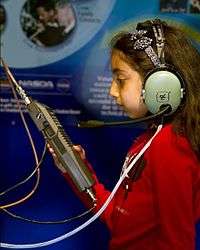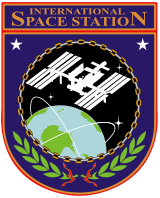Amateur Radio on the International Space Station

Amateur-satellite service Amateur Radio on the International Space Station (ARISS) - operating in the Amateur-satellite service - is a project sponsored by various entities and carried out by astronauts and cosmonauts on the International Space Station who also have an amateur radio license. The program was previously called SAREX, the Space Amateur Radio Experiment, and before that the Shuttle Amateur Radio Experiment. In 2011, Kenwood Electronics launched an advertising campaign capitalizing on the fact that their TM-D700A transceiver is currently in use on the ISS.[1]
Amateur radio operators all over the world are able to speak directly to astronauts/cosmonauts via their handheld, mobile, or home radio stations. Low power radios and small antennas can be used to establish communications. It is also possible to send digital data to the space station via laptop computers hooked up to the same radio and antenna, similar to an email communication, except that it uses radio frequencies instead of telephone or cable connections.
The space station occupants work a standard work day and have breaks in the evening and during meals. While on break, some of them will spend some time communicating with "earthlings" via amateur radio.
Notes
External links
| Wikimedia Commons has media related to Amateur Radio on the International Space Station. |



